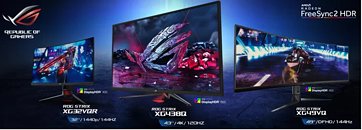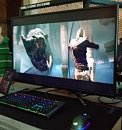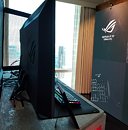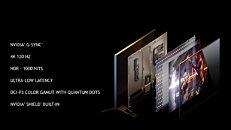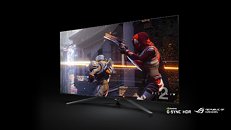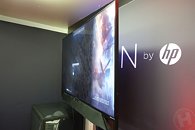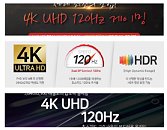
ASUS Announces Trio of ROG Strix XG Monitors Supporting AMD's FreeSync 2
ASUS at CES showcased their upcoming lineup of ROG Strix gaming monitors specifically crafted for usage with AMD's FreeSync 2. The new monitors look to cater to most of the market with their diagonals and resolutions. These are premium solutions, with the smallest, the XG32VQR, sporting a 32" 1440p panel, 144 Hz native refresh rate, and VESA's HDR400 certification. The XG438Q ups the ante to a 43" panel and 4K resolution screen, with a 120 Hz base refresh rate (overclockable up to 144 Hz) and HDR 600, while the XG49VQ is of the ultra wide variety, featuring a DFHD (3840 x 1080) resolution, 144 Hz base refresh rate, and HDR 400.
All monitors feature a FreeSync 2 range of 48-120/144Hz, all employ a VA panel and a 4 ms response rating. The 43-inch sports 10-watt speakers, the 49-inch model has a pair of 5-watt speakers and the 32-inch XG32VQR lacks the completely. No pricing was available at time of writing, but these are ASUS' premium offering s for the FreeSync ecosystem, and with those specs, they likely won't come cheap.
All monitors feature a FreeSync 2 range of 48-120/144Hz, all employ a VA panel and a 4 ms response rating. The 43-inch sports 10-watt speakers, the 49-inch model has a pair of 5-watt speakers and the 32-inch XG32VQR lacks the completely. No pricing was available at time of writing, but these are ASUS' premium offering s for the FreeSync ecosystem, and with those specs, they likely won't come cheap.
